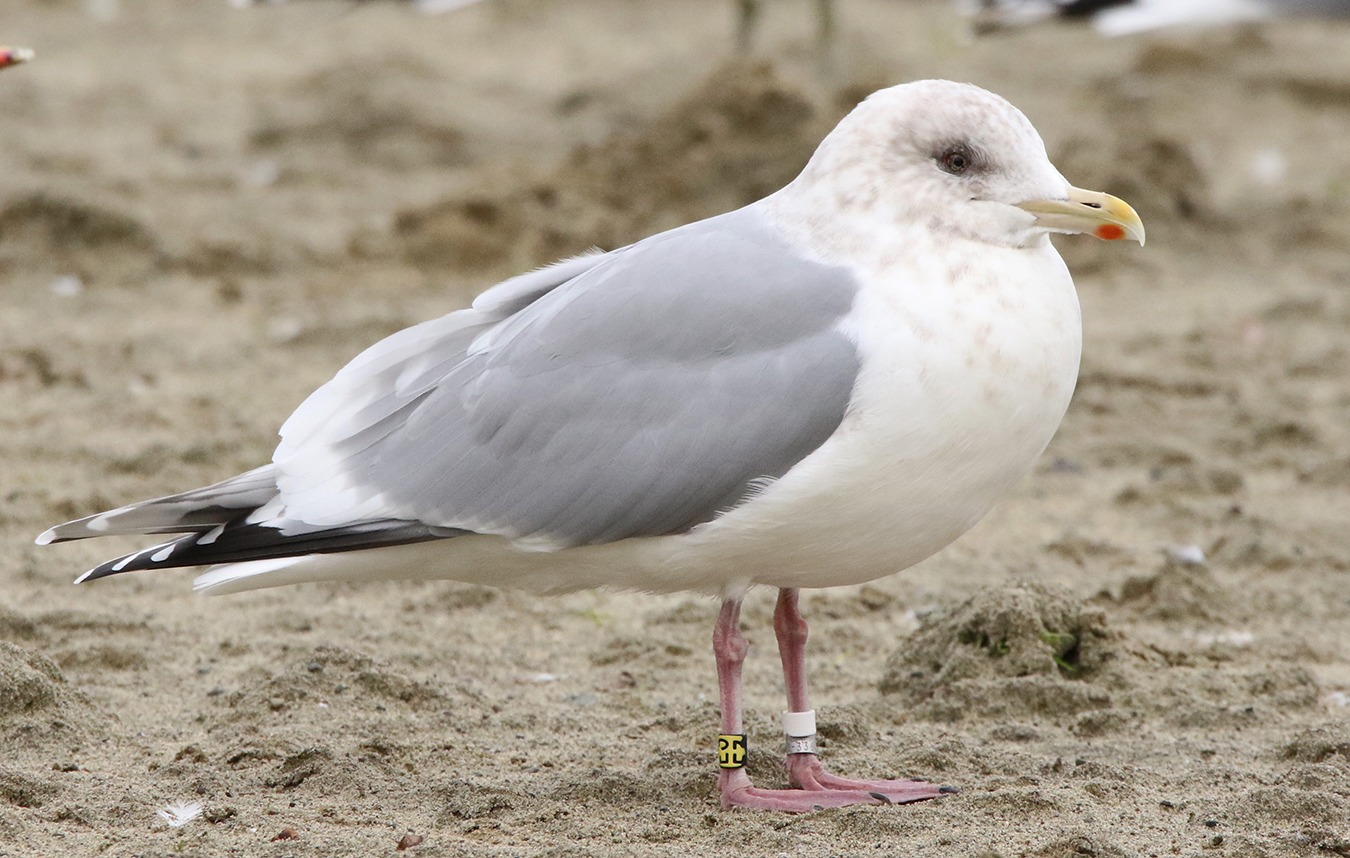 Thayer's Gull (thayeri)
Thayer's Gull (thayeri)
(last update: January 22, 2013)
Thayer's Gull thayeri E3 adult, February 15 2020, community park- Parksville, BC. Picture: Liam Singh.
Please visit Liam's Pbase pages with many more stunning images!
Thayer's y[E3] and Federal Band Number 966-33640 was captured and marked on July 1st, 2007 as a breeding adult, on St. Helena Island in Canada's high Arctic, 3400 kilometers from Parksville. The Island is situated just off of Cape Vera, Devon Island, Nunavut. This banding project is coordinated by Karel Allard as part of a Canadian Wildlife Service study.
This breeding adult was caught using a box trap at nest 54 at St. Helena Island on a clutch of two eggs with an estimated clutch initiation date of 24 June. Nest 54 was located at the top of a scree slope, at the base of a cliff/rock promontory: (76 16.694' ,-89 9.355').
It's a dark eyed bird (speckled iris) with broken medial band on P10 (visible in the far wing, a so-called 'thayeri pattern'). Thin sub-terminal black band on P5. By 2020 it's a 16+CY bird.

Cape Vera is an uninhabited headland on Devon Island in the Qikiqtaaluk Region of Nunavut, Canada. Protruding off of the island's northwestern Colin Archer Peninsula, it faces Jones Sound. Often, a polynya forms in the Cardigan Strait, a waterway that separates the cape from North Kent Island.
Cape Vera, approximately 8 km (5 mi) in size, with an elevation up to 245 m (804 ft) above sea level, is characterized by open sea, coastal cliffs, grassy to bare-rock cliff ledges, scree, and boulders. The rocky, marine shore, of limestone formation, is approximately 300 ft (91 m) in width.
The cape is notable as a Canadian Important Bird Area (#NU053), an International Biological Program site (Region 9, #2-11) and a Key Migratory Bird Terrestrial Habitat site. Notable bird species include Northern Fulmar and Common Eider. Colonial Seabirds are also attracted to this remote, High Arctic site. (wikipedia).
